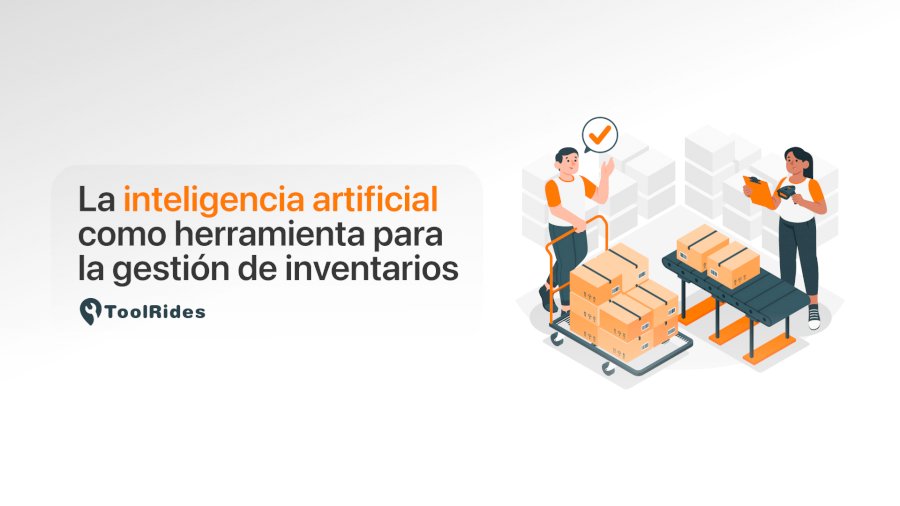The use of AI can help predict future demand, optimize inventory levels, improve efficiency, and prevent loss and theft. It's well known that inventory management has always been a major challenge for companies operating in the logistics, transportation, and distribution sectors.
The need to maintain a balance between inventory levels and customer demand, while minimizing storage and transportation costs, makes inventory development a complex and critical task for businesses. However, artificial intelligence is currently becoming an increasingly popular tool for improving inventory management in these areas.
Main advantages offered by artificial intelligence in inventory management
With the advent of AI, logistics service companies have discovered that they can evolve many aspects of their development easily and quickly. Below, we'll discuss some of the benefits you can gain by implementing AI in your business.
Demand forecasting
By analyzing historical data and using machine learning algorithms, machines can accurately predict how many products will be needed to meet future demand.
Error reduction
Machines can analyze large amounts of data in real time and make decisions based on this information. This reduces the possibility of human errors, such as failure to track products or overestimating demand.
Supply chain optimization
By predicting product demand, machines can coordinate production and transportation more effectively. This reduces costs and improves inventory management efficiency.
Pattern Identification
By analyzing information about best-selling products, production times, and fluctuations in demand, machines can identify patterns and trends that can be useful for decision-making.
AI must be integrated into the inventory control system so that the results can be used in real time for decision-making.
Artificial intelligence can help logistics operators improve inventory accuracy. With AI, logistics operators can track inventory more accurately, meaning they can avoid stockouts or overstocks, improving customer satisfaction and reducing storage costs. It can also optimize transportation and distribution.
It can analyze transportation and distribution data to optimize routes and reduce wait times, improving efficiency and lowering transportation costs. It can also prevent loss and theft by detecting suspicious activity patterns in inventory and transportation, allowing logistics operators to prevent loss and theft.
AI can be a valuable tool for improving inventory management in logistics, transportation, and distribution. Logistics operators can significantly benefit from AI to improve inventory accuracy, optimize transportation and distribution, and prevent loss and theft.
Robotic warehouses and artificial intelligence, advantages of using these technologies
The logistics sector has undergone significant change in recent years, largely due to technological advances. In fact, the use of automated warehouses and artificial intelligence has become a growing trend in the business sector, with the aim of improving efficiency and productivity.
Robotic warehouses are automated facilities that use robots and other mechanical systems to store and retrieve goods. This system allows companies to store large quantities of products efficiently and safely. It also reduces human error, increases product retrieval speed, and lowers storage costs.
The combination of robotic warehouses and artificial intelligence creates an automated system that can be controlled and managed with a precision and speed that is impossible with manual methods. AI is used to control and coordinate the robots, allowing the system to operate efficiently.
Advantages of using robotic warehouses and artificial intelligence
If you still have any doubts about the benefits of adopting new technology in your business, below we'll list some advantages of implementing automated warehouses in your supply chain.
-
Greater efficiency: Automated warehouses significantly improve a company's efficiency and productivity. AI can analyze and optimize product storage and retrieval processes, enabling greater efficiency in inventory management and reduced delivery times.
-
Error Reduction: The use of automated warehouses and artificial intelligence reduces the risk of human error, resulting in greater accuracy in inventory management. Robots can identify and retrieve products accurately and quickly, reducing errors and losses.
-
Time and cost savings: By allowing businesses to save time and money, AI can optimize inventory management, reducing storage costs and improving management efficiency. Additionally, robots can retrieve and transport products more efficiently than human workers, saving time and costs.
-
Increased safety: Robots can perform dangerous and heavy tasks, reducing the risk of occupational injuries and illnesses. Additionally, robots can identify and prevent safety issues, reducing the risk of workplace accidents.
-
Improved decision-making: Artificial intelligence enables businesses to make more informed, data-driven decisions, as it can analyze vast amounts of information, enabling them to make more accurate and timely decisions in inventory management and business decisions.
-
Increased customer satisfaction: AI can optimize inventory management and delivery speed, resulting in a better customer experience. Additionally, accurate and rapid product retrieval reduces customer wait times.
-
Space Optimization: Robotic warehouses are designed to maximize storage space and minimize empty space. Efficient space utilization can reduce storage costs and improve warehouse storage capacity.
AI within everyone's reach
Any business sector that has product storage and retrieval needs can benefit from the use of automated warehouses and even AI. Logistics, distribution, and retail are currently benefiting. In other words, it's time to invest in innovation to improve inventory management.






